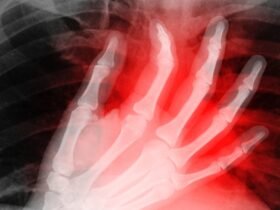Experiments with vampire bats running on treadmills have revealed they have a highly unusual method of getting energy from protein, due to their specialised diet.
Most mammals get the bulk of their energy for movement from fats and stored sugars, but the three species of vampire bats subsist on a diet of blood drawn from their victims, which is rich in proteins but low in fats and sugars. How their metabolism works is therefore unclear, as amino acids, which make up proteins, typically supply less than 10 per cent of animals’ energy during exercise.
To learn more about their metabolism, Kenneth Welch and Giulia Rossi at the University of Toronto in Canada studied 24 adult common vampire bats (Desmodus rotundus) captured in Belize. The bats were fed on cows’ blood containing amino acids with labelled carbon atoms, then placed on a treadmill in a small box.
The bats’ metabolic rate was measured by tracking oxygen intake and carbon dioxide expiration while they ran on the treadmill at speeds of up to 30 metres per minute. By analysing the carbon isotopes in the exhaled breath, the researchers found that they were drawing energy from their recent meal rather than stored fats or sugars.
Welch conceived of the experiment 20 years ago while researching how hummingbirds made use of the sugar in nectar, and discovering that there was a similarity with nectar-feeding bats. He knew that the tsetse fly (Glossina morsitans) fed on blood and was unusual in that it didn’t make use of fats or carbohydrates, but instead used proteins, and wondered if vampire bats would be similar.
But while hummingbirds and some nectar bats can hover in flight, making experiments possible without a large and expensive wind tunnel, vampire bats cannot. However, they do have the ability to run at speed, which they use to track prey on the ground, so Welch and Rossi could put them through their paces on a treadmill instead.
Drawing most energy from amino acids is unusual in the animal kingdom, confined to blood-feeding insects, emperor penguins during long periods of fasting and hibernating bears. “What’s different here is that this seems to be what this animal is going to do all year round, every day when it feeds, and that it’s making use of the protein in that blood meal that it ingested just minutes before,” says Welch. “That’s what really separates these animals from most of the rest of us.”
While most animals can turn nutrients into sugars and fats and store them away, vampire bats have evolved a different strategy that leaves them far more susceptible to starvation – in fact, they are at risk of starvation after only 24 hours without feeding, says Welch. To compensate for this, they have developed strong social bonds and will share meals with each other when one member of the group has failed to find food, regurgitating some of their own blood meal into another bat’s mouth to sustain it.
Topics:













Leave a Reply